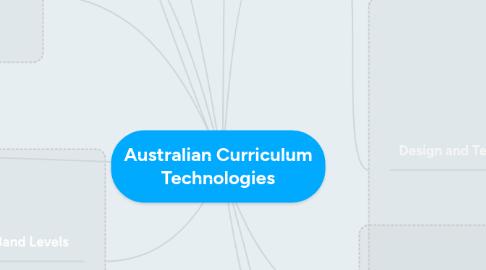
1. Rationale
1.1. The technologies curriculum sparks curiosity, confidence, innovation and creativity within students. It motivates and engages the formulation and design of solutions to challenges, and develops skills transferable to all aspects of students' lives.
2. General Capabilities
2.1. Knowledge, skills and behaviours that will assist students to live and work effectively within the 21st century
2.1.1. Literacy
2.1.2. Numeracy
2.1.3. Information & Communication Technologies
2.1.4. Critical & creative thinking
2.1.5. Personal & social
2.1.6. Ethical understanding
2.1.7. Intercultural understanding
3. Achievement Standards
3.1. The achievement standards outline the expected level of achievement for the content and skills to be acquired in each band description. Achievement of these expectations is therefore progressive throughout the years within each band.
4. Curriculum aims & objectives
4.1. The Technology curriculum aims to develop the knowledge, understanding and skills to allow students to design solutions, make informed decisions regarding the use of technologies for a sustainable future,and engage confidently and safely with its use.
5. Student Diversity
5.1. Allows teachers the flexibility to cater for students diverse needs in promoting excellence and equity for all.
5.1.1. Students with disability
5.1.2. English as an additional language or dialect
5.1.3. Gifted and talented
6. Key Ideas
6.1. Creating preferred futures
6.2. Project Management
6.3. Thinking in Technologies
6.3.1. Systems thinking
6.3.2. Design thinking
6.3.3. Computational thinking
6.4. Information and communication technologies
6.5. Safety
6.6. Animal ethics
7. Band Levels
7.1. F-2
7.2. 3-4
7.3. 5-6
7.4. 7-8
7.5. 9-10
8. Cross-curriculum Priorities
8.1. Expose students to the contemporary issues faced within our globalised world
8.1.1. Aboriginal and Torres Strait Islander histories and cultures
8.1.2. Asia & Australia's engagement with Asia
8.1.3. Sustainability
9. ACARA & SCASA
9.1. While ACARA is the overarching national curriculum, SCASA has been adapted and simplified specifically for Western Australia, detailing content descriptors and elaborations for individual years opposed to two year band descriptions.
10. Content descriptors and elaborations
10.1. The content descriptors provide the content, skills and knowledge to be taught across each subject, for each year level. The elaborations expand on these descriptors providing further guidance of what to teach for the content required.
11. Subjects
11.1. Digital Technologies
11.1.1. Strands
11.1.1.1. Knowledge and Understanding
11.1.1.1.1. Digital systems
11.1.1.1.2. Representation or data
11.1.1.2. Processes and Production Skills
11.1.1.2.1. Collecting, managing & analysing data
11.1.1.2.2. Digital implementation
11.1.1.2.3. Creating solutions by
11.1.2. Useful Resources for Teaching
11.1.2.1. http://dtm4260.edublogs.org/2016/08/04/tynker-coding-for-kids/
11.1.2.2. http://dtm4260.edublogs.org/2016/08/06/codecombat/
11.2. Design and Technologies
11.2.1. Strands
11.2.1.1. Knowledge and Understanding
11.2.1.1.1. Technologies and Society
11.2.1.1.2. Technologies Contexts
11.2.1.2. Processes and Production Skills
11.2.1.2.1. Creating Solutions by
